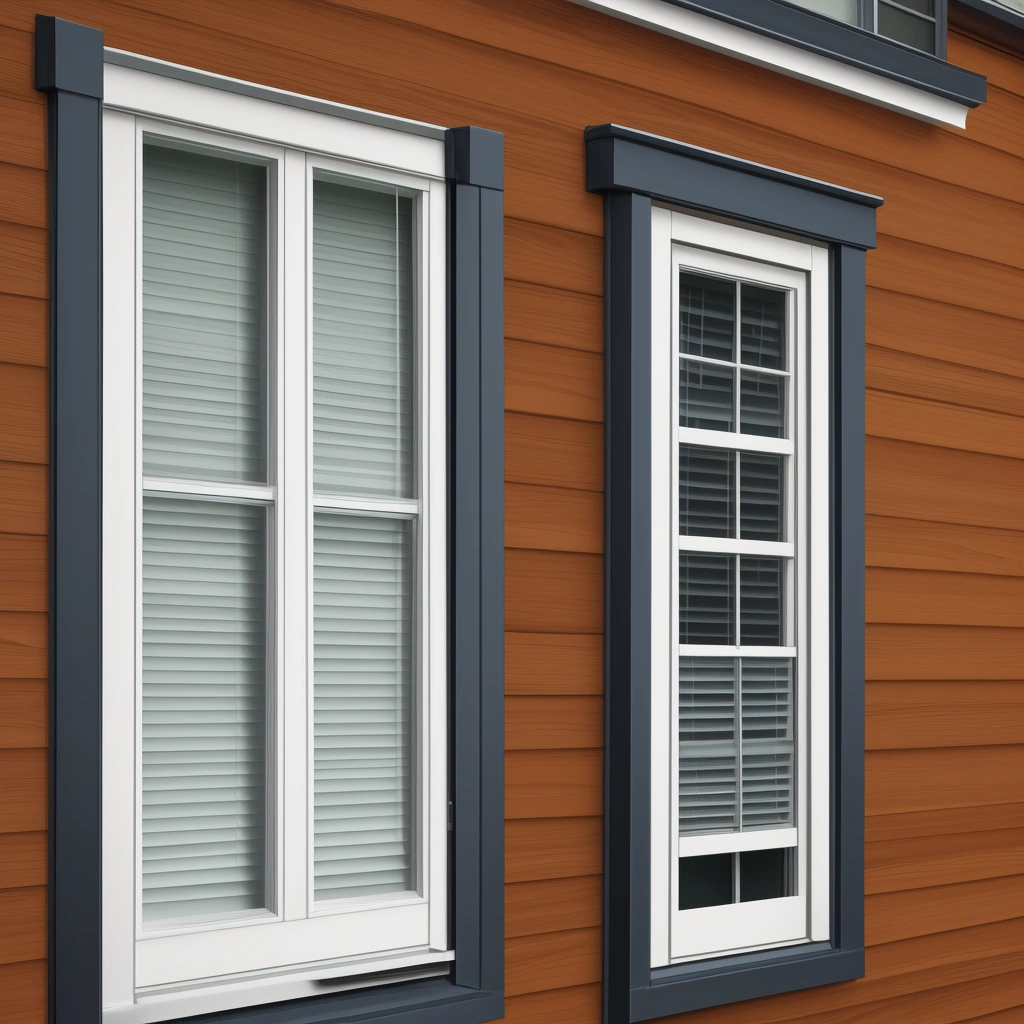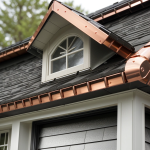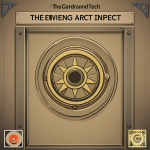Double the Impact: Why Combining Energy-Efficient Windows and Siding Will Save You Money in the Long Run
The Power of Synergy: Energy Efficiency Beyond Individual Upgrades
For homeowners, the relentless pursuit of energy efficiency is often framed as an environmental imperative, driven by concerns about climate change and resource conservation. However, the financial benefits of reducing energy consumption are equally compelling, transforming energy-efficient upgrades from altruistic endeavors into savvy financial decisions. While individual home improvement projects like installing energy-efficient windows or insulated siding can offer demonstrable savings, combining these improvements unlocks a synergistic effect, amplifying their impact on your wallet and your home’s overall performance.
This article delves into the compelling reasons why this combined approach – a holistic strategy for creating a high-performance thermal envelope – is a smart investment, exploring the materials, technologies, and long-term financial gains that await those who embrace it. The power of combining energy-efficient windows and insulated siding lies in their ability to work in tandem to minimize heat transfer and air leakage, two primary culprits behind inflated utility bills. Energy-efficient windows, particularly those featuring Low-E glass coatings and argon or krypton gas fills, drastically reduce conductive and radiative heat transfer.
Simultaneously, insulated siding, such as vinyl siding with a foam backing or fiber cement siding installed with a continuous layer of rigid foam insulation, creates a thermal barrier that minimizes heat loss through the walls. This combined approach effectively seals the building envelope, preventing conditioned air from escaping and unconditioned air from entering, thereby reducing the workload on your HVAC system and leading to significant cost savings. Beyond the immediate benefits of reduced utility bills, investing in both energy-efficient windows and siding offers substantial long-term financial advantages.
By minimizing the strain on your HVAC system, these upgrades can extend its lifespan, delaying costly repairs or replacements. Furthermore, a well-insulated and energy-efficient home is more comfortable year-round, eliminating drafts and temperature imbalances that can detract from your living experience. This enhanced comfort, coupled with the tangible cost savings, can significantly increase your property value, making your home more attractive to potential buyers should you decide to sell. In essence, combining window replacement with siding installation is not just a home renovation project; it’s a strategic investment in your home’s future, aligning with the growing demand for green homes and sustainable living.
Energy-Efficient Windows: The Foundation of Home Energy Savings
Windows are often a primary culprit in energy loss, acting as significant thermal weak points in a home’s envelope. Older, single-pane windows offer minimal resistance to heat transfer, essentially acting as conduits that allow heat to escape during winter and pour into the home during summer. This forces HVAC systems to work overtime, driving up energy consumption and increasing utility bills. Energy-efficient windows, however, represent a significant advancement in home insulation technology. These windows, particularly those featuring Low-E coatings and multiple panes filled with inert gases like argon or krypton, dramatically reduce conductive and radiative heat transfer, keeping homes cooler in the summer and warmer in the winter.
Investing in window replacement is a direct investment in home energy savings. Low-E (low-emissivity) coatings are a critical component of energy-efficient windows. These microscopically thin, virtually invisible coatings minimize the amount of ultraviolet and infrared light that can pass through the glass without compromising the amount of visible light transmitted. This selective filtering helps to maintain consistent and comfortable temperatures inside the home, reducing the reliance on energy-intensive heating and cooling systems. The benefits extend beyond just temperature regulation; Low-E glass also helps protect interior furnishings from fading caused by UV exposure.
Modern windows further enhance energy efficiency through improved airtight seals and advanced framing materials that minimize drafts and prevent air leakage, contributing to a tighter thermal envelope for the home. Beyond the core features, consider the impact of proper window installation. Even the most energy-efficient windows will underperform if they are not correctly installed. Gaps and cracks around the window frame can negate the benefits of Low-E glass and inert gas fills. Professional siding installation companies often provide window replacement services and can ensure a proper seal, preventing air infiltration and maximizing energy savings.
Furthermore, selecting the right window style for your climate can also impact energy efficiency. For example, casement windows generally offer a tighter seal than sliding windows. By carefully considering these factors, homeowners can optimize their home insulation and significantly reduce utility bills. According to energystar.gov, replacing single-pane windows with ENERGY STAR certified windows can save homeowners an average of $101–$583 a year, with even greater savings possible when combined with other home improvements like insulated siding.
Siding’s Role: Creating a Thermal Envelope for Your Home
While energy-efficient windows address heat transfer through glass, siding plays a crucial role in insulating the walls of your home. Traditional siding materials like wood can degrade over time, leading to gaps and cracks that allow air infiltration. Modern siding options, such as insulated vinyl siding and fiber cement siding, offer superior insulation and airtightness. Insulated vinyl siding features a foam backing that provides an additional layer of thermal resistance, effectively minimizing heat loss in the winter and heat gain in the summer.
Fiber cement siding is known for its durability and resistance to extreme weather conditions, providing a robust barrier against the elements while also contributing to home insulation. Proper siding installation is also critical. Gaps and improperly sealed seams can negate the benefits of even the most energy-efficient materials. Combining energy-efficient windows with properly installed insulated siding creates a thermal envelope that significantly reduces energy loss. Beyond simply covering the exterior walls, modern siding acts as a significant component of a home’s overall thermal performance.
The R-value, a measure of thermal resistance, is a key factor to consider when selecting siding. Insulated vinyl siding, for example, can have an R-value significantly higher than traditional vinyl siding, leading to substantial home energy savings. Fiber cement siding, while not inherently offering high insulation, can be combined with an external insulation layer during siding installation to achieve comparable R-values. This approach not only enhances energy efficiency but also provides a more uniform and consistent thermal barrier across the entire wall surface.
Selecting the right siding material, therefore, is a critical home improvement decision that directly impacts your ability to reduce utility bills and improve comfort. The impact of siding extends beyond just R-value. Air infiltration, the uncontrolled movement of air through cracks and gaps in the building envelope, is a major source of energy loss. Properly installed siding, particularly when combined with a weather-resistant barrier, minimizes air infiltration, creating a tighter thermal envelope. According to the U.S.
Department of Energy, air infiltration can account for as much as 30% of a home’s heating and cooling costs. By investing in high-quality siding and professional siding installation, homeowners can significantly reduce air infiltration and improve home energy savings. This, in turn, reduces the strain on the HVAC system, potentially prolonging its lifespan and minimizing costly repairs. A well-sealed home is a more comfortable and energy-efficient home. Consider the example of a homeowner in a cold climate replacing old, drafty wood siding with insulated vinyl siding and upgrading to energy-efficient windows with Low-E glass.
The combined effect of these home renovation projects creates a high-performance thermal envelope, reducing heat loss during the winter months. This results in lower heating bills, a more comfortable indoor environment, and a reduced carbon footprint. Furthermore, the increased property value associated with these energy-efficient upgrades makes it a smart long-term investment. Similarly, in warmer climates, the combination of energy-efficient windows and siding helps to keep the home cooler, reducing the reliance on air conditioning and leading to significant cost savings. These real-world examples demonstrate the tangible benefits of combining these two key home improvement strategies.
Beyond Utility Bills: Long-Term Financial Benefits and Home Value Appreciation
The true cost savings of combining energy-efficient windows and insulated siding extend far beyond the immediate gratification of lower utility bills. Reduced energy consumption, a direct result of superior home insulation, translates to significantly less wear and tear on your HVAC system. This not only prolongs its lifespan, potentially delaying costly repairs or replacements, but also allows the system to operate more efficiently, further compounding your home energy savings. For example, a furnace working overtime to compensate for heat loss through old windows and drafty siding might only achieve 70% efficiency.
By creating a tighter thermal envelope with energy-efficient windows and siding, the same furnace could operate at 90% efficiency, saving you money every time it cycles on. This is a crucial factor often overlooked when considering the long-term financial benefits of home improvement projects focused on energy efficiency. Furthermore, improved insulation achieved through window replacement and siding installation dramatically enhances the comfort of your home, eliminating drafts and creating more consistent temperatures throughout. This heightened comfort reduces the need to constantly adjust your thermostat, further contributing to cost savings and a more enjoyable living environment.
Imagine a winter where you no longer have to huddle near the fireplace to stay warm, or a summer where every room feels equally cool without blasting the air conditioning. This consistent temperature regulation also protects sensitive items like artwork and musical instruments from temperature-related damage, another often-unacknowledged benefit. The combination of Low-E glass in energy-efficient windows and the thermal resistance of insulated vinyl siding or fiber cement siding creates a truly comfortable and energy-efficient home.
Beyond the direct and indirect cost savings, investing in energy-efficient windows and siding can substantially increase your property value. According to a report by the National Association of Home Builders (NAHB), homeowners who invest in energy-efficient upgrades often see a significant return on their investment in the form of increased home value. A well-insulated and energy-efficient home is more attractive to potential buyers, particularly those seeking a green home or prioritizing sustainable living. Features like ENERGY STAR certified windows and newly installed siding signal a commitment to energy conservation, making your home a more valuable asset in the long run. Moreover, many buyers are willing to pay a premium for a home with lower anticipated energy costs, making energy-efficient upgrades a smart financial decision with both short-term and long-term benefits.
Material Selection and Contractor Considerations: Ensuring a Successful Investment
Selecting the right materials and finding qualified contractors are crucial steps in maximizing the benefits of this investment in energy-efficient windows and insulated siding. When choosing windows, look beyond the initial aesthetics and prioritize ENERGY STAR certification, a reliable indicator of energy performance. Delve into the technical specifications, paying close attention to the U-factor, which measures heat transfer; lower numbers indicate better insulation. The Solar Heat Gain Coefficient (SHGC) is equally important, particularly in warmer climates, as it quantifies how much solar radiation enters your home.
Opt for windows with Low-E glass coatings to further minimize heat transfer and reduce utility bills, effectively contributing to overall home energy savings. Remember that window replacement is a significant home improvement project, and selecting the right windows directly impacts your long-term cost savings and property value. For siding, research different materials like insulated vinyl siding, fiber cement siding, and engineered wood, considering factors like insulation value (R-value), durability, and maintenance requirements. Insulated vinyl siding offers a balance of cost-effectiveness and energy efficiency, enhancing your home insulation and contributing to a more robust thermal envelope.
Fiber cement siding, while typically more expensive, provides exceptional durability and resistance to the elements, potentially leading to long-term cost savings by minimizing repairs. Engineered wood offers a natural aesthetic with improved resistance to moisture and pests compared to traditional wood siding. The choice depends on your budget, climate, and desired aesthetic, but prioritizing a high R-value will directly translate to lower energy consumption and reduced strain on your HVAC system. Obtain multiple quotes from reputable contractors with proven experience in energy-efficient window and siding installation.
Don’t solely focus on the lowest price; consider the contractor’s credentials, licensing, insurance, and years of experience. Check their online reviews on platforms like the Better Business Bureau and Angie’s List, and ask for references from previous clients. A reputable contractor will readily provide these and be transparent about their installation process. A poorly installed window or siding can negate its energy-saving benefits, leading to air leaks, moisture damage, and ultimately, higher energy bills. Investing time in choosing the right contractor is essential to ensuring that your home renovation project delivers the promised cost savings and enhances your home’s energy efficiency and property value.
A well-executed siding installation, paired with energy-efficient windows, contributes significantly to creating a green home and promoting sustainable living. Furthermore, inquire about the contractor’s familiarity with local building codes and permit requirements related to window replacement and siding installation. Compliance with these regulations is crucial for ensuring the safety and longevity of the installation. Some contractors may also be aware of local or state-level incentives or rebates for energy-efficient home improvements, which can further offset the initial investment. By thoroughly vetting potential contractors and ensuring they possess the necessary expertise and knowledge, you can safeguard your investment and maximize the long-term benefits of combining energy-efficient windows and siding.
Real-World Examples: Documented Savings and Enhanced Comfort
Numerous case studies and real-world examples demonstrate the tangible benefits of combining energy-efficient windows and siding, showcasing the power of a holistic approach to home energy savings. A study conducted by the U.S. Department of Energy found that homes with both upgraded windows and siding experienced an average energy savings of 20% compared to homes with only one upgrade. This highlights the synergistic effect, where the combined impact is greater than the sum of its parts.
For instance, a homeowner in Minneapolis reported a 30% reduction in their heating bills after replacing their old windows and siding with energy-efficient alternatives, a testament to the potential for significant cost savings and improved home comfort in colder climates. These examples underscore how strategic home improvement projects can dramatically reduce utility bills and enhance overall living conditions. Beyond broad averages, specific material choices and installation practices further influence the magnitude of savings. Consider a home renovation project in Phoenix, Arizona, where the homeowners opted for Low-E glass in their energy-efficient windows and paired it with insulated vinyl siding.
The result was a significant reduction in cooling costs during the scorching summer months, alongside a noticeable improvement in indoor comfort. This illustrates how selecting the right combination of energy-efficient windows and insulated siding, tailored to the local climate, can maximize home insulation and minimize energy consumption. Furthermore, proper siding installation is critical to creating a tight thermal envelope, preventing air leaks and optimizing the performance of both the windows and siding. Moreover, the financial advantages extend beyond immediate utility bill reductions.
Upgrading to energy-efficient windows and siding can substantially increase property value, making it a smart investment for the long term. Potential homebuyers are increasingly prioritizing energy efficiency and sustainable living, viewing homes with these upgrades as more desirable and valuable. A recent survey by the National Association of Realtors found that a majority of homebuyers are willing to pay a premium for homes with energy-efficient features. By investing in window replacement and siding installation, homeowners not only enjoy immediate cost savings and enhanced comfort but also position their homes for greater resale value in the future. This makes combining energy-efficient upgrades a sound financial decision with both short-term and long-term benefits.
A Smart Investment in Your Home’s Future
Investing in energy-efficient windows and insulated siding transcends the notion of a simple home improvement project; it represents a strategic and forward-thinking investment in your home’s future performance and long-term financial well-being. The synergy created by combining these upgrades amplifies home energy savings, far exceeding the sum of their individual contributions. This holistic approach not only slashes monthly utility bills but also significantly reduces long-term maintenance costs by lessening the strain on your HVAC system.
Moreover, the enhanced thermal envelope contributes to a more comfortable and consistent indoor climate, boosting your property value and overall quality of life. As energy costs continue their inexorable climb, the financial advantages of this combined strategy will only become more pronounced, solidifying its status as a wise and responsible decision for homeowners seeking both economic and environmental benefits. Beyond the immediate gratification of reduced energy consumption, consider the long-term implications for your home’s structural integrity and market appeal.
For instance, replacing old, drafty windows with energy-efficient windows featuring Low-E glass and argon fills can dramatically minimize heat transfer, keeping your home cooler in the summer and warmer in the winter. Simultaneously, upgrading to insulated vinyl siding or fiber cement siding not only enhances curb appeal but also provides a robust layer of home insulation, further reducing energy loss and protecting your home from the elements. This comprehensive approach minimizes the risk of moisture damage, prevents premature wear and tear, and positions your home as a desirable, energy-conscious property in an increasingly competitive real estate market.
A well-maintained thermal envelope is a key selling point for prospective buyers, translating into a higher resale value and faster sales cycle. To maximize the return on your investment, prioritize materials with proven performance and seek out qualified contractors specializing in window replacement and siding installation. Look for the ENERGY STAR label, which signifies that a product meets stringent energy efficiency guidelines set by the U.S. Environmental Protection Agency. When selecting windows, pay close attention to the U-factor (a measure of heat transfer) and the Solar Heat Gain Coefficient (SHGC), ensuring they are appropriate for your climate. Similarly, when choosing siding, consider factors like R-value (a measure of insulation) and durability. By carefully selecting materials and entrusting the installation to experienced professionals, you can ensure that your home renovation project delivers optimal cost savings, enhances comfort, and contributes to a more sustainable living environment. Embracing this holistic approach transforms your home into an energy-efficient haven, safeguarding your financial future and contributing to a greener planet.


